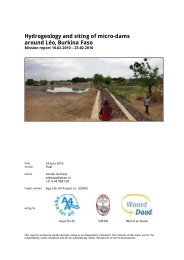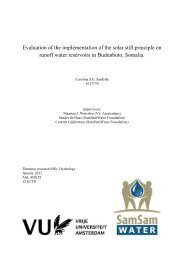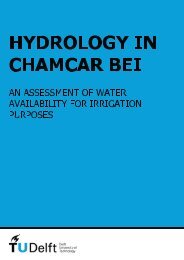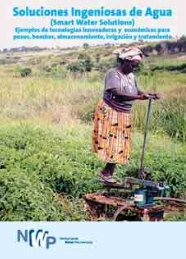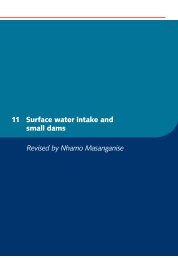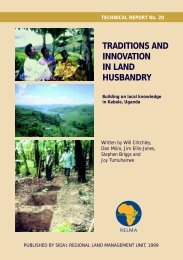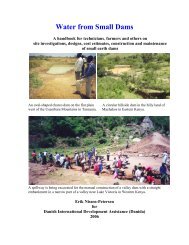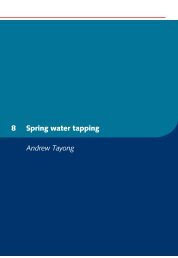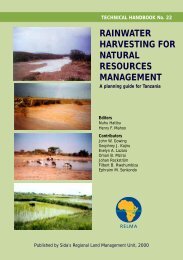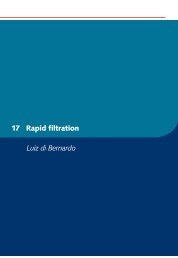KITUI SAND DAMS
Sasol - 2004 - Kitui sand dams Construction and ... - SamSamWater
Sasol - 2004 - Kitui sand dams Construction and ... - SamSamWater
You also want an ePaper? Increase the reach of your titles
YUMPU automatically turns print PDFs into web optimized ePapers that Google loves.
infiltration, surface flow begins and this is what is described as the surface run off. Thethin film of water is formed in the soil and this is called the inter flow. Then the rest ofthe water goes to the ground water and this forms the base flow of the river. Thismovement of water through the surface of the soil is a function of a number of factors,which determine the flow and infiltration capacities. These are; the intensity ofprecipitation, permeability of the ground surface, duration of precipitation, vegetationcover, area of drainage basin, the river geometry, depth to water table, slope of the landsurface etcThe run off portion of the water falling directly in the river channel is called channelprecipitation. When the storage of the interception and depressions becomes saturated,and more water infiltrates the ground, land flow begins and this becomes the surface runoff.Hydrologic cycle, therefore, includes the distribution of water and the path followed bythe water after it precipitates on the land until it goes to the stream channel or directly tothe atmosphere through Evapotranspiration.Evapotranspiration.Through Evapotranspiration, the water goes back to the atmosphere. This is usuallythrough evaporation and transpiration It has been difficult however to separateevaporation and transpiration because they take place at the same time and therefore theyare taken together and thus the word evapotranspiration, This happens when the watermolecules on a surface acquire enough energy through radiation to escape in gaseousstate. Ground water is never affected by direct evaporation. However, the roots of plantsare responsible for ground water discharge. The plants loose the water they get from theground through their leaves. Some plants are known to have roots going to a depths ofthirty meters below the surface.Infiltration.This is the maximum rate at which a given soil can absorb precipitation in a givencondition. It decreases exponentially in time from maximum capacity decreasing from aninitial value to a constant rate. This depends on soil moisture mainly. It decreases withthe saturation of the soil up to a terminal rate. The rate of lateral flow is faster in the firstfew meters but at some point it stabilizes. The soil particles arrangement and sortingaffect the rate of water movement in the soil. This is due to the degree of sorting in thesoil. On complete saturation, movement of water is minimal. This can be determinedusing the double ring method.Subsurface water.Water found on the surface of the soil in known as the soil water. This water moves downon gravitational influence. It gets to the intermediate zone. The water in these two levelsis known as the vadoze water. Most of the ground water is stored in this saturated zone.The transition from different levels of the water zones is however different in differentsoils. The capillary fridge is the next level. This dependents on the grain size of the soilas this affects the capillarity rise in the soils. It is rather abrupt in sands than in loams and23



